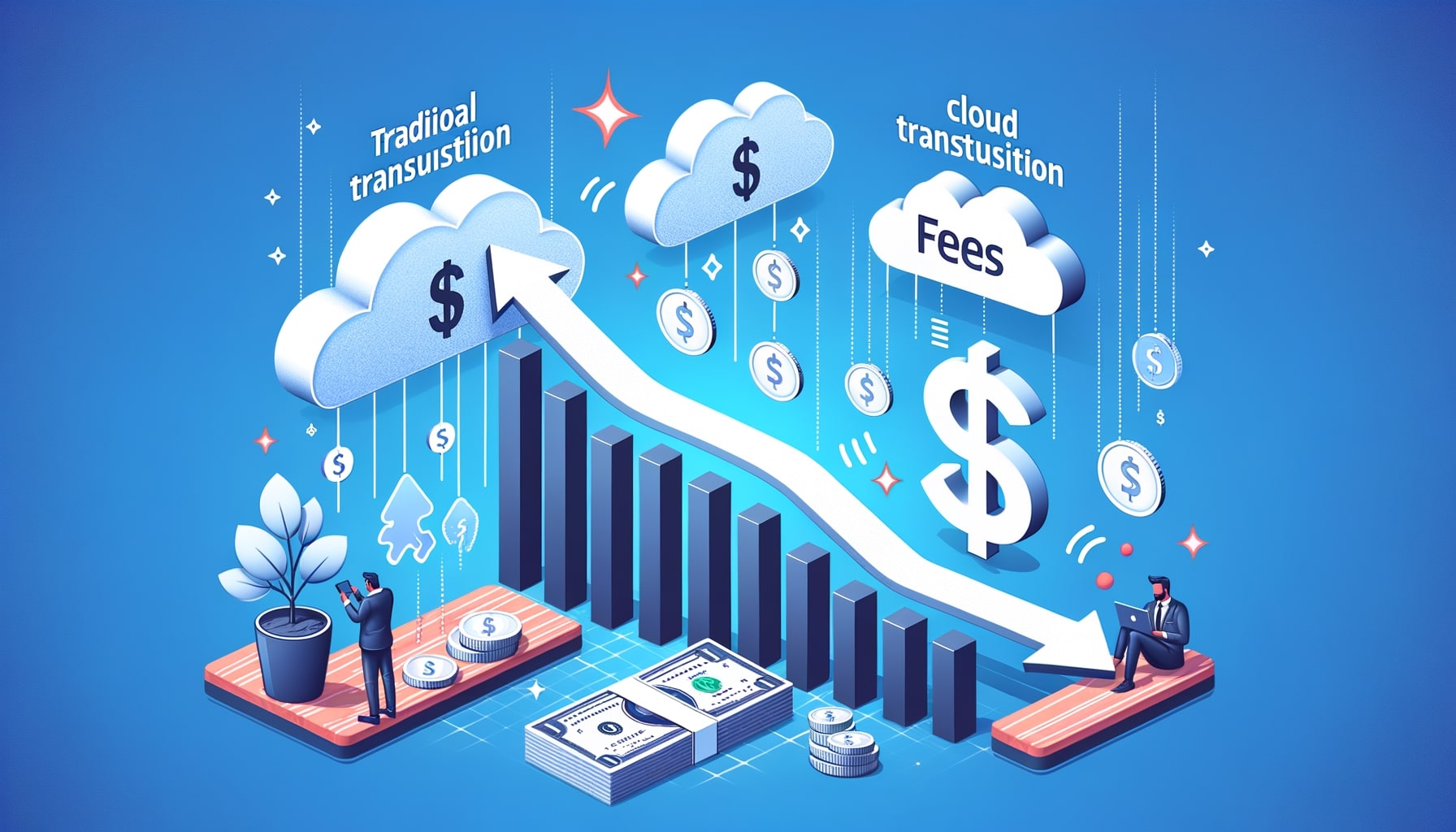What Is a Cloud Payment Gateway and How Does It Work
The shift towards digital transactions has fueled the rise of cloud payment gateways, revolutionizing the way businesses process payments online. A cloud payment gateway enables seamless and secure online transactions, allowing businesses to accept various payment methods, including credit cards, debit cards, and digital wallets, all processed in real time.
Unlike traditional payment gateways that rely on in-house servers, cloud-based payment gateways operate on cloud infrastructure, offering enhanced scalability, accessibility, and security.
In this article, we will delve into the world of cloud-based payment gateways, exploring their basics, functionality, benefits, factors to consider when choosing one, integration into businesses, security measures, common challenges, and frequently asked questions.
Understanding the Basics of Cloud Payment Gateways
A cloud payment gateway is an online payment system that facilitates the secure transfer of payment information from the customer to the merchant. Hosted on a cloud-based infrastructure, these gateways offer flexibility, allowing businesses to manage transactions from any device with internet access.
Cloud payment gateways operate on a cloud-based infrastructure, which means that the processing and storage of payment data occur in a remote server rather than on the merchant’s local system. This cloud-based approach offers numerous advantages, including scalability, flexibility, and accessibility from anywhere with an internet connection.
Key Components of a Cloud Payment Gateway

Several essential components work together to facilitate secure and efficient payment processing in a cloud-based payment gateway system.
Encryption Protocols
Encryption protocols are integral to protecting customer data. They convert sensitive payment information into coded text that unauthorized individuals cannot read, safeguarding customer data from cyber threats.
Authentication Mechanisms
Authentication mechanisms, such as two-factor authentication (2FA), add a layer of security by requiring additional verification from the customer. This ensures that only authorized users can access the payment system.
Tokenization
Tokenization replaces sensitive payment information with unique tokens, making it impossible for hackers to retrieve actual payment data if they gain access to the tokenized information. This feature is critical in cloud payment gateways to reduce fraud risks.
Payment Processors and Acquiring Banks
Payment processors facilitate the transaction by communicating with acquiring banks to transfer funds. The acquiring bank then routes the payment request to the issuing bank for final authorization, ensuring a secure and complete payment cycle.
How Does a Cloud Payment Gateway Work?

Understanding the working of a cloud-based payment gateway helps clarify its role in facilitating secure transactions. Here is a step-by-step breakdown of the transaction flow in a cloud-based payment gateway system.
Step 1: Customer Initiates the Payment
The process begins when a customer selects products or services on an e-commerce platform and proceeds to checkout. At this stage, the customer enters their payment details, including credit card or bank information, into the merchant’s secure payment form.
Step 2: Data Encryption and Transmission
The payment data is then encrypted to ensure that sensitive information remains secure. Once encrypted, the data is transmitted securely to the cloud payment gateway. This encryption is essential for protecting payment data from unauthorized access.
Step 3: Authentication and Authorization
After the cloud-based payment gateway receives the encrypted data, it sends it to the acquiring bank for authentication. The acquiring bank communicates with the issuing bank (the customer’s bank) to verify the availability of funds and the validity of the transaction.
Step 4: Transaction Approval or Decline
If the issuing bank approves the transaction, an authorization code is sent back to the cloud payment gateway, which then informs the merchant of the successful transaction. In case of insufficient funds or incorrect details, the issuing bank will decline the transaction, and the merchant will receive a notification of the failed transaction.
Step 5: Settlement and Fund Transfer
Upon successful authorization, the funds are transferred from the customer’s bank account to the merchant’s account. This process may take a few days depending on the payment provider, but in most cases, cloud payment gateways expedite settlement.
Benefits of Using a Cloud Payment Gateway

Cloud payment gateways offer numerous benefits for businesses, from enhanced scalability to cost-effectiveness, making them increasingly popular for e-commerce and omnichannel payment processing.
Scalability
cloud-based payment gateways are highly scalable, allowing businesses to handle fluctuating transaction volumes without overhauling infrastructure. This flexibility makes cloud payment gateways ideal for growing businesses or those with seasonal sales peaks.
Reduced Operational Costs
Since cloud payment gateways don’t require extensive hardware or maintenance, they often lead to reduced operational costs. Businesses can focus resources on core activities rather than investing in expensive server upkeep.
Enhanced Security
With built-in security features like encryption and tokenization, cloud payment gateways offer robust protection against fraud and cyber threats. They also ensure compliance with Payment Card Industry Data Security Standards (PCI DSS), further safeguarding customer data.
Accessibility and Remote Management
The cloud-based nature of these gateways allows businesses to manage and monitor payments from any location, providing convenience and flexibility, especially for businesses with multiple locations.
Factors to Consider When Choosing a Cloud Payment Gateway
Selecting the right cloud payment gateway requires evaluating various factors to ensure it aligns with business goals and operational needs.
Security Features
Security should be a top priority, and the chosen gateway should have encryption, tokenization, and compliance with PCI DSS. Look for providers that offer robust fraud detection tools to prevent potential threats.
Supported Payment Methods
Consider a gateway that supports multiple payment methods, including credit cards, digital wallets, and bank transfers. This flexibility ensures that customers can use their preferred payment method, enhancing the user experience.
Pricing and Fees
Understanding the fee structure is essential. Look for gateways with transparent pricing models that align with your business volume and budget to avoid hidden fees that could impact your profitability.
Customer Support and Reliability
A reliable payment gateway should have a responsive customer support team that provides assistance 24/7. Downtime can significantly impact sales, so ensure the gateway has a high uptime guarantee.
Integrating a Cloud Payment Gateway into Your Business

Integrating a cloud payment gateway into your business requires careful planning and execution. Firstly, ensure that your e-commerce platform or payment system supports the chosen gateway. Most cloud payment gateways provide detailed documentation and developer resources to facilitate the integration process.
Next, consider the user experience and design of your payment pages. A seamless and intuitive payment interface can significantly impact customer satisfaction and conversion rates. Customize the payment pages to align with your brand’s aesthetics and ensure a consistent user experience throughout the purchasing journey.
Additionally, test the integration thoroughly before going live. Conduct multiple test transactions to ensure that the payment process functions smoothly and that all data is transmitted securely. This testing phase is crucial to identify and resolve any potential issues or bugs before customers encounter them.
Security Measures in Cloud Payment Gateways

Security is a critical aspect of cloud-based payment gateways, especially given the sensitive nature of payment data. Various security measures ensure that transactions remain secure from potential threats.
End-to-End Encryption
End-to-end encryption ensures that payment data is protected from the point of entry until it reaches the acquiring bank, making it difficult for unauthorized parties to access sensitive information.
PCI DSS Compliance
Cloud payment gateways adhere to PCI DSS, a set of security standards established by major card companies. PCI compliance mandates encryption, data masking, and other protocols to protect cardholder data.
Real-Time Fraud Detection
Advanced cloud-based payment gateways use AI-driven fraud detection systems that monitor transactions for unusual activity, enabling real-time identification of potential fraud and reducing the risk of chargebacks.
Biometric Authentication
For an added layer of security, some cloud payment gateways support biometric authentication, such as fingerprint scanning and facial recognition. This helps verify the customer’s identity during high-risk transactions.
Common Challenges and Solutions in Cloud Payment Gateways

While cloud payment gateways offer numerous benefits, they also come with their fair share of challenges. One common challenge is the potential for downtime or service interruptions. As cloud-based payment gateways rely on remote servers and internet connectivity, any disruptions in these areas can impact the payment process. To mitigate this risk, businesses should choose a reliable and reputable cloud payment gateway provider that offers robust infrastructure and redundancy measures.
Another challenge is the complexity of integration with existing systems. Depending on the e-commerce platform or payment system, integrating a cloud payment gateway may require technical expertise and development resources. To overcome this challenge, businesses should allocate sufficient time and resources for the integration process, seeking assistance from the gateway provider or experienced developers if necessary.
Furthermore, ensuring compliance with industry regulations and standards can be a challenge for businesses using cloud payment gateways. The Payment Card Industry Data Security Standard (PCI DSS) sets strict requirements for the handling and storage of payment data. Businesses must ensure that their chosen cloud payment gateway complies with these standards and regularly undergoes security audits to maintain compliance.
Frequently Asked Questions
Q1. What is a cloud payment gateway?
A cloud payment gateway is a technology that enables businesses to securely process online transactions, allowing customers to make payments conveniently and efficiently.
Q2. How does a cloud payment gateway work?
A cloud payment gateway acts as a bridge between the customer, the merchant, and the payment processor. It securely transmits payment data from the customer’s device to the payment processor, verifying the transaction and relaying the response back to the merchant.
Q3. What are the benefits of using a cloud payment gateway?
Using a cloud payment gateway enhances the customer experience, offers scalability, provides advanced features such as recurring billing and fraud detection, and streamlines payment processes.
Q4. What factors should be considered when choosing a cloud payment gateway?
Factors to consider include compatibility with existing systems, security measures, pricing models, and transaction fees.
Q5. How can a cloud payment gateway be integrated into a business?
Integrating a cloud payment gateway requires ensuring compatibility with existing systems, customizing payment pages, and thoroughly testing the integration before going live.
Conclusion
In conclusion, cloud payment gateways have revolutionized the way businesses process online transactions. By securely transmitting payment data and providing advanced features, these gateways enhance the customer experience and streamline payment processes. However, businesses must carefully consider factors such as compatibility, security measures, and pricing when choosing a cloud payment gateway.
By integrating the gateway seamlessly into their systems and implementing robust security measures, businesses can leverage the benefits of cloud payment gateways while ensuring the safety of their customers’ sensitive information.









